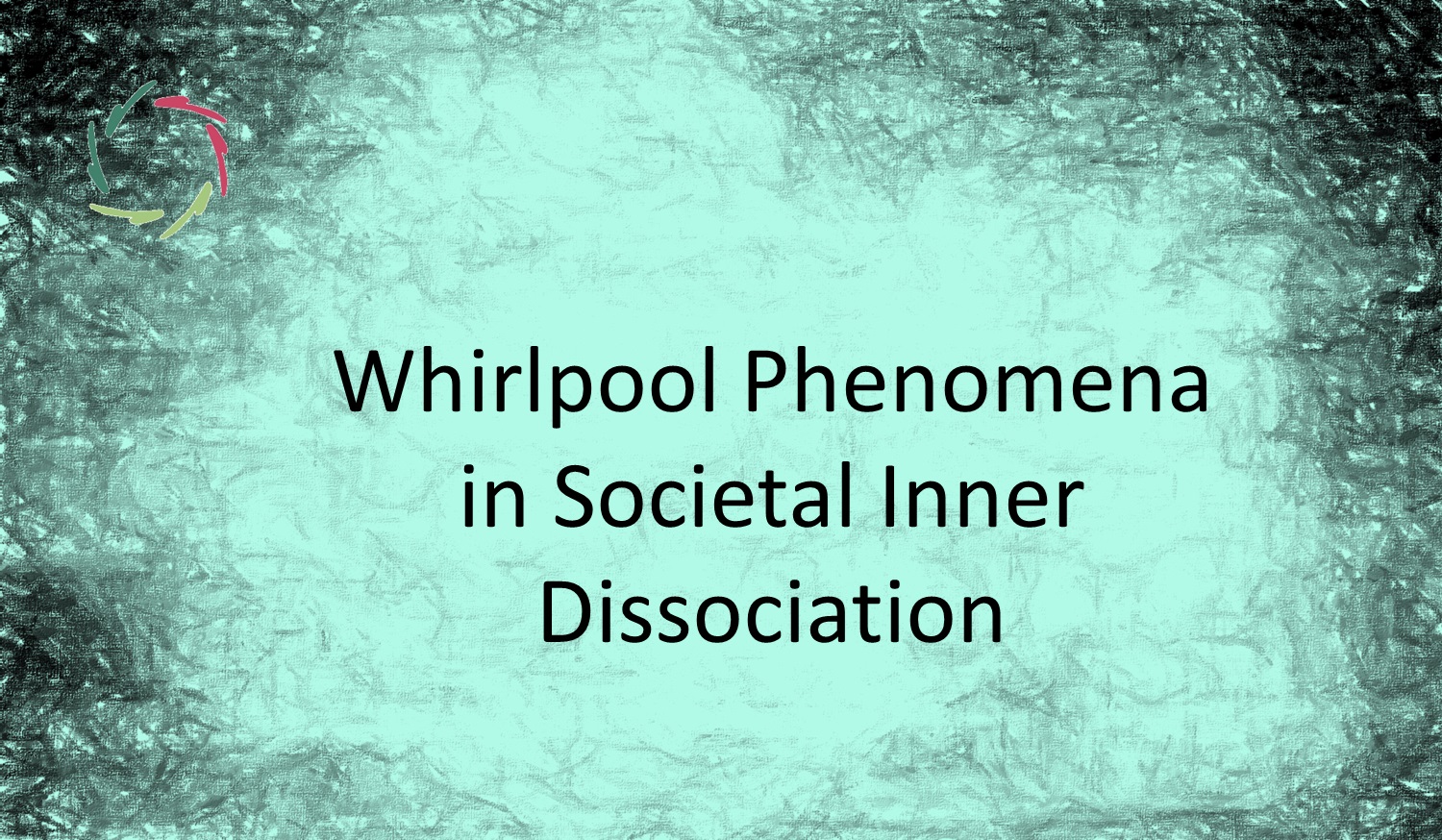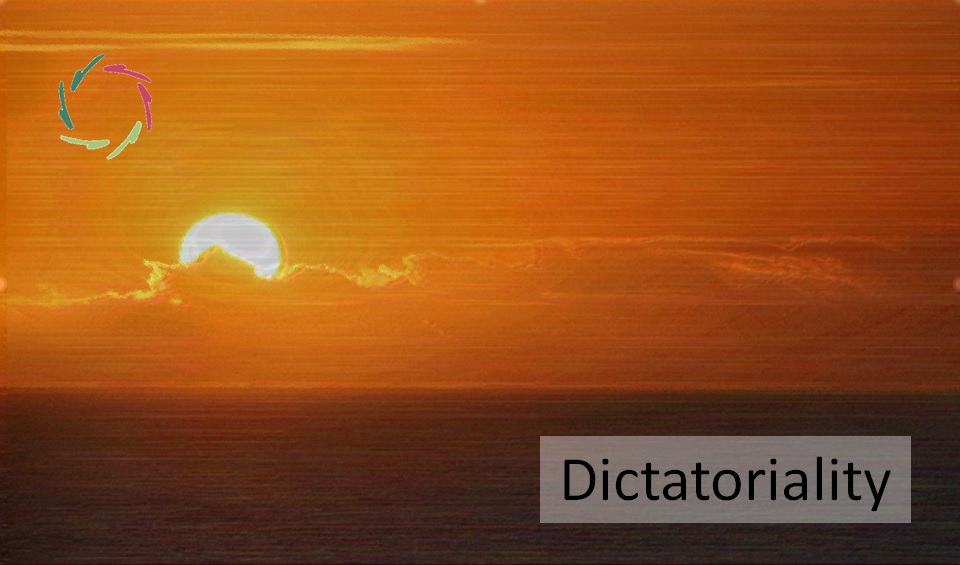Whirlpool Phenomenon in Societal Inner Dissociation

The Whirlpool Phenomenon in Societal Inner Dissociation (SID) is an intricate web where multiple societal and individual factors interact, reinforcing and amplifying each other in ways that deepen fragmentation and disconnection, pulling individuals and entire communities into a cycle that is increasingly difficult to escape.
Understanding and addressing this whirlpool is essential if we are to create a more cohesive, resilient society. This blog is part of the *SID* series. Please read the primary blog of this series for a basic understanding of Societal Inner Dissociation (SID).
The concept of whirlpool phenomena
The Whirlpool Phenomenon in SID is a complex structure where various societal and individual elements are interlinked, each feeding into the others. These interactions create a self-perpetuating pattern, where dissociation begets further dissociation, and fragmentation deepens, creating an ever-tightening spiral. This whirlpool pulls societies deeper into disintegration, making it harder to address any one issue without confronting the broader, interconnected challenges.
In this whirlpool, issues like economic inequality, political polarization, and social isolation do not exist in isolation. They are interconnected, each one exacerbating the others, creating a multifaceted problem that cannot be solved by addressing a single factor. The complexity of this phenomenon demands a holistic approach, one that acknowledges the interplay between different societal forces and seeks to break the cycle at multiple levels.
SID’s role in worsening negative societal factors
SID plays a critical role in worsening various negative societal factors, creating conditions that allow these issues to flourish. As individuals and communities become more dissociated, social cohesion weakens, and the bonds that hold societies together begin to fray. This fragmentation contributes to a range of problems, including economic inequality and political polarization. Some elements:
- SID deepens economic inequality by creating divisions between different social groups. As people become more disconnected from one another, empathy and understanding diminish, leading to policies and practices that favor the wealthy and marginalize the poor. This growing divide exacerbates feelings of alienation and dissatisfaction, which in turn fuel further dissociation, creating a cycle of inequality and fragmentation.
- In a society where SID is prevalent, political polarization intensifies as individuals retreat into ideological echo chambers. These silos reinforce narrow viewpoints and discourage dialogue, making it difficult to find common ground. The result is a political landscape marked by hostility and division, where constructive engagement is rare. This polarization not only deepens SID but also hinders the ability to address other societal issues effectively.
- As SID progresses, social isolation becomes more pronounced. Individuals withdraw from communal activities and relationships, leading to weakened social bonds and increased mental health challenges. This isolation feeds into the whirlpool, as the lack of connection exacerbates feelings of dissociation, further alienating individuals from their communities and society at large.
Other societal factors worsening SID
Just as SID exacerbates societal challenges, these challenges also worsen SID, creating a feedback loop that deepens the whirlpool. Each factor not only contributes to SID but is also amplified by it, making the cycle even more difficult to break. Some elements:
- As economic inequality grows, so does the sense of alienation and disconnection among those who feel left behind. This disconnection fuels further dissociation as individuals struggle to find their place in a society that seems to reject them. The widening gap between rich and poor perpetuates SID and makes it more difficult to address the underlying issues, as the voices of the marginalized are increasingly drowned out.
- The deeper the political divides, the more isolated and dissociated individuals become. Polarization fosters an environment where people see those with differing views as enemies rather than fellow citizens. This us-versus-them mentality further entrenches SID, making it harder to bridge divides and restore a sense of community and shared purpose.
- SID contributes to environmental degradation by fostering a disconnect between humans and the natural world. As people become more dissociated, they are less likely to prioritize environmental stewardship, leading to unsustainable practices that harm the planet. This degradation, in turn, deepens the disconnect as individuals feel increasingly isolated from the natural environment, reinforcing the cycle of dissociation.
The whirlpool effect: a self-perpetuating pattern
The Whirlpool Phenomenon in SID is characterized by its complexity and interconnectedness. Unlike a simple vicious circle, this phenomenon involves multiple elements interacting in ways that make the pattern more resistant to change. Each factor not only influences others but is also influenced by them, creating a dynamic and evolving challenge.
The self-perpetuating nature of the whirlpool means that without a comprehensive approach, efforts to break free from the cycle are likely to be insufficient. As the whirlpool deepens, the interactions between its elements become more complex, creating a situation where the problems feed off each other in increasingly intricate ways. This escalating complexity requires a nuanced understanding of the interdependencies within the whirlpool and a willingness to tackle the problem from multiple angles.
Strategies for breaking the whirlpool pattern
One of the key strategies for breaking the whirlpool pattern is to help individuals reconnect with their deeper selves. This involves promoting practices that reduce inner dissociation, such as mindfulness, self-reflection, and coaching. By fostering inner integration, individuals can become more resilient to the forces of SID, contributing to a more cohesive and connected society. Some strategies:
- Strengthening community bonds is crucial for counteracting the fragmentation caused by SID. By rebuilding the social fabric, we can create environments where individuals feel connected and valued, reducing the impact of SID on society.
- Public discourse that goes beyond surface-level symptoms and addresses the deeper causes of societal challenges is essential for breaking the whirlpool pattern, creating a foundation for more constructive engagement.
- Restoring trust in societal institutions is critical for mitigating the effects of SID. This requires transparency, accountability, and responsiveness to the needs of all citizens.
- Reconnecting with nature and promoting environmental stewardship are vital components of breaking the whirlpool pattern.
Lisa’s role in addressing the whirlpool phenomenon
In addressing the Whirlpool Phenomenon in SID, Lisa can play a pivotal role. As a supportive guide, Lisa has the potential to help individuals, organizations, and communities navigate out of the whirlpool by fostering deeper connections, promoting self-awareness, and encouraging holistic approaches to societal challenges. Some of the ways:
- Lisa can help individuals reconnect with their inner selves, reducing inner dissociation and strengthening their resilience against SID. By providing tools for self-reflection, mindfulness, and personal growth, Lisa can empower individuals to break free from the patterns that sustain the whirlpool.
- Lisa can also support organizations in creating more inclusive, equitable, and cohesive environments. By promoting practices that prioritize human connection, empathy, and sustainability, Lisa can help organizations become more resilient to the forces of SID.
- Through thoughtful and empathetic engagement, Lisa can influence public discourse toward more integrative, depth-oriented solutions that address the root causes of SID. By facilitating dialogue that bridges divides , Lisa can help untangle the self-perpetuating patterns of the whirlpool.
Navigating out of the whirlpool
The Whirlpool Phenomenon in Societal Inner Dissociation represents a profound challenge, where multiple negative societal factors reinforce each other in a complex, self-perpetuating pattern. To break free from this whirlpool, it is essential to adopt a holistic approach that addresses the interconnected elements simultaneously.
Lisa’s role in this process is crucial, offering guidance, support, and insight to individuals, organizations, and communities as they navigate out of the whirlpool. With the right strategies and collective effort, we can create a more integrated, resilient society that can address its challenges in a constructive and inclusive manner.
Lisa is ready for all personal coaching ― of course, without manipulating anyone.


